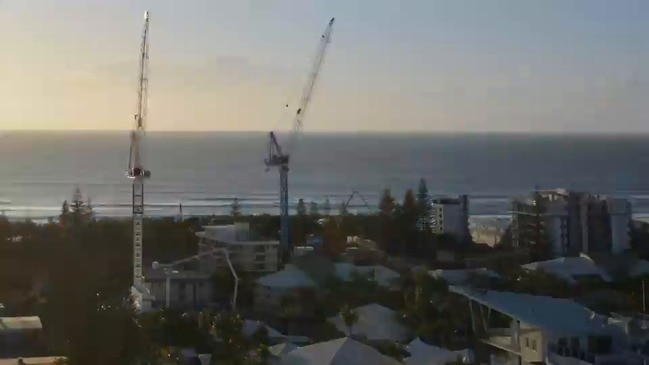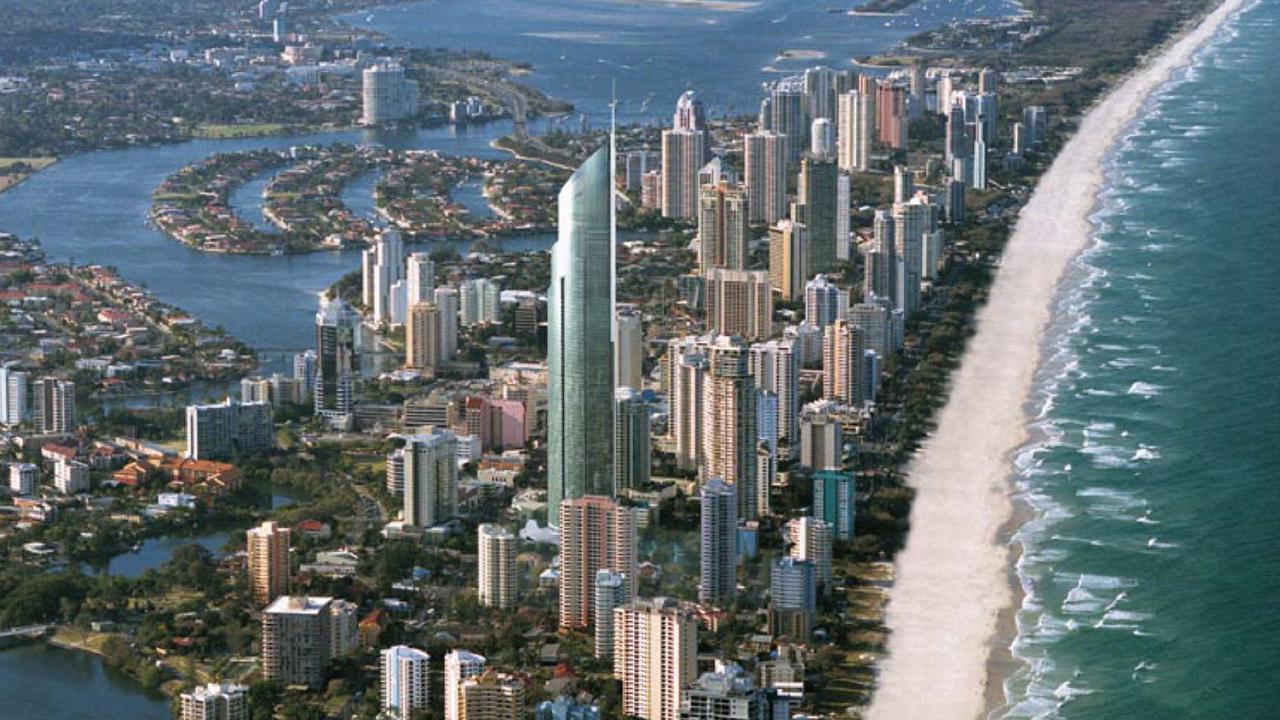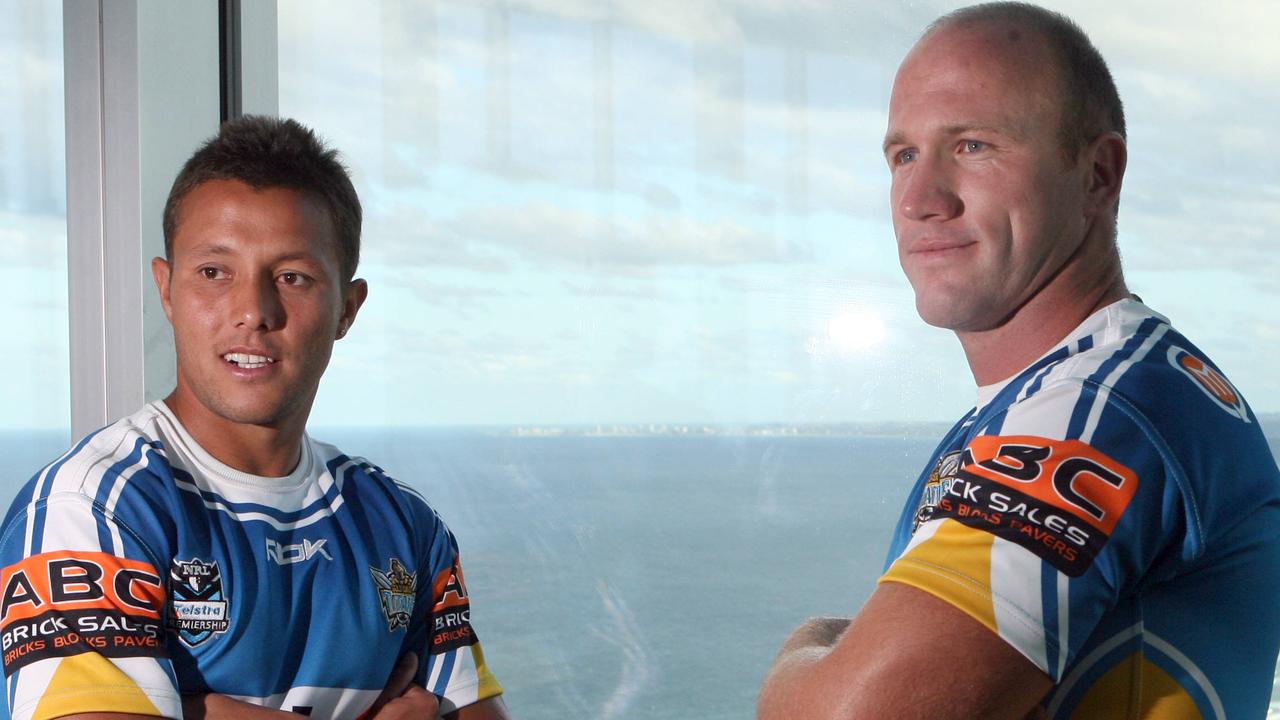Gold Coast development: True story of Sunland Group’s Surfers Paradise Q1 tower
The Q1 is the Gold Coast’s most famous tower. This is the true inside story of the Sunland-built project which became the city’s first supertower. READ THE FULL STORY >>>>>

THE Q1 is the Gold Coast’s most famous tower and indisputably one of the most important developments in the city’s history.
At 322.5m tall, it still holds the record as Australia’s tallest building thanks to its giant spire and has become an icon of the skyline, having even been used in the Gold Coast 2018 Commonwealth Games logo.
This month marks two decades since its developer, Sunland Group, unveiled the project, which took three years to build and became our first supertower.
Gold Coast development: Full list of high-rise tower projects suburb by suburb

Gold Coast development: Real reason behind shortage of units and rising property prices
At the time the 47-storey Peninsula tower was the city’s tallest building. Today it isn’t even in the top 10.
Many mega projects were proposed before the Q1 and several have followed, but it broke the mould in the early 2000s and sparked a wave of similarly sized skyscrapers.
By early 2001, Sunland was fresh off the success of Palazzo Versace at The Spit and was in the midst of building Labrador’s The Grand.
The Gold Coast’s economy was struggling in the wake of the late 1990s Asian financial crisis.

Shock impact: How the Nobby Beach twin towers will cast a shadow on beachside suburb
It was the same year the city would also endure the one-two punch of Ansett Australia’s collapse and the September 11 terrorist attacks in the same week, devastating the tourism industry.
Surfers Paradise became the focus for the development industry as both Sunland and Raptis Group snapped up “bomb sites” left over from the end of the late 1980s-early 1990s boom and began building major projects including the Chevron Renaissance and Circle on Cavill towers.

In June 2001 Sunland announced it had filed plans with council to build the 78-storey tower on a former car yard and shops.
Sunland founder Soheil Abedian told the Bulletin at the time the city’s property market was in dire straits and needed new projects to revitalise it.
“By the time we are ready to start work at the (Circle on Cavill) land, the situation will be far worse,” he said.
The $500 million building, which would go on to be named Queensland One (Q1), was announced as being 20m taller than Paris’ Eiffel Tower.
It was a joint venture with GWA Ltd’s Anderson family who had held the Gold Coast Highway site for more than a decade.

However, a building of that size had never been attempted before on the Gold Coast or in a location so close to a beach, so Sunland brought in a crack team of engineers which used “an emerging technique called post-tensioning” to shore it up with high-tension cables and reinforce concrete.
The project, redesigned in the wake of the 9/11 attacks to make it more sturdy, was approved by the council in November 2001, with then-mayor Gary Baildon predicting the building would become a tourist attraction in its own right.
Its design was based on the Sydney 2000 Olympic torch.
FULL DIGITAL ACCESS: JUST $1 FOR FIRST 12 WEEKS

To mark the occasion, Mr Abedian revealed the tower’s first buyer – Olympian Ian Thorpe, who snapped up a two-bedroom unit for $950,000.
The then-19-year-old became the face of the tower though he ultimately never moved into the unit and later sold it for more than $1 million when he relocated to the US.
Mr Abedian said at the time he never considered abandoning the project after the terrorist attacks on the World Trade Centre in New York.
“`Life must go on,’’ he said.
“`If we stop progress in our society and our vision for the future, the terrorists have won.’’

Q1 went to the market in early 2002 and more than 400 of its 527 units were sold in just four days, notching up more than $17 million.
It sold out within six months and construction began in June 2002 when Premier Peter Beattie turned the first sod.
By mid-2004 the tower’s height surpassed Peninsula and became the Gold Coast’s tallest building.

Work was finally completed on October 28, 2005 and Q1 was named the world’s tallest residential tower.
Thanks to a boom in supertower development in New York and Dubai in the past 16 years it today is now the 11th-tallest tower.

The Skypoint observation deck opened in December 2005 and Cr Baildon’s prediction it would become a popular tourist attraction came to pass, with tens of thousands of people passing through its doors annually.
Q1 immediately became synonymous with the Gold Coast skyline and in 2009, just four years after opening, was named by the state government as one of 150 icons of Queensland.

Sunland went on to build Dubai One (D1) a sister tower to Q1 in the United Arab Emirates along with a second, much larger Palazzo Versace hotel, though it lacks the giant spire.
In the past decade several developers have since announced plans to build larger towers, but none have risen from the ground. to beat Q1 yet.




